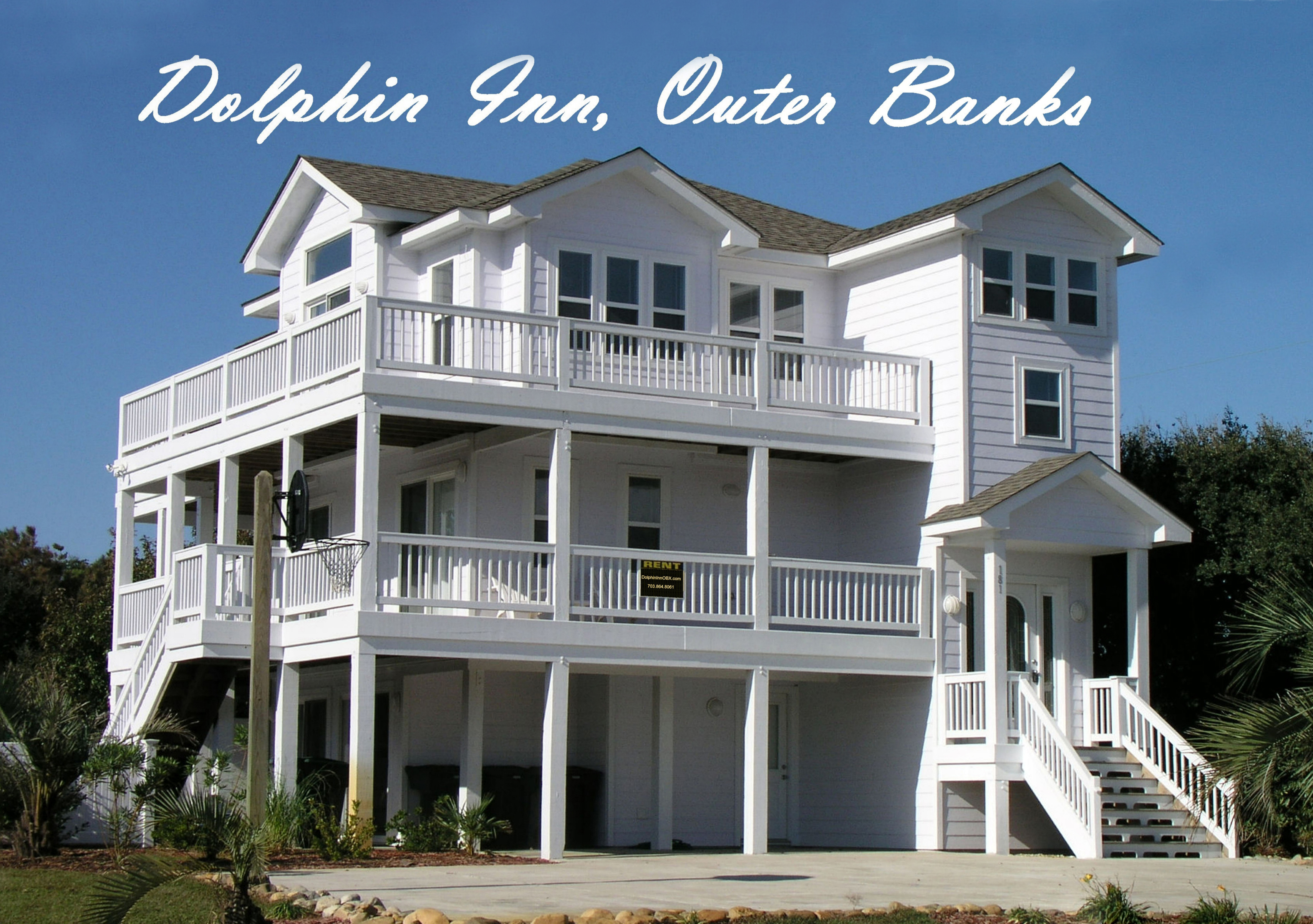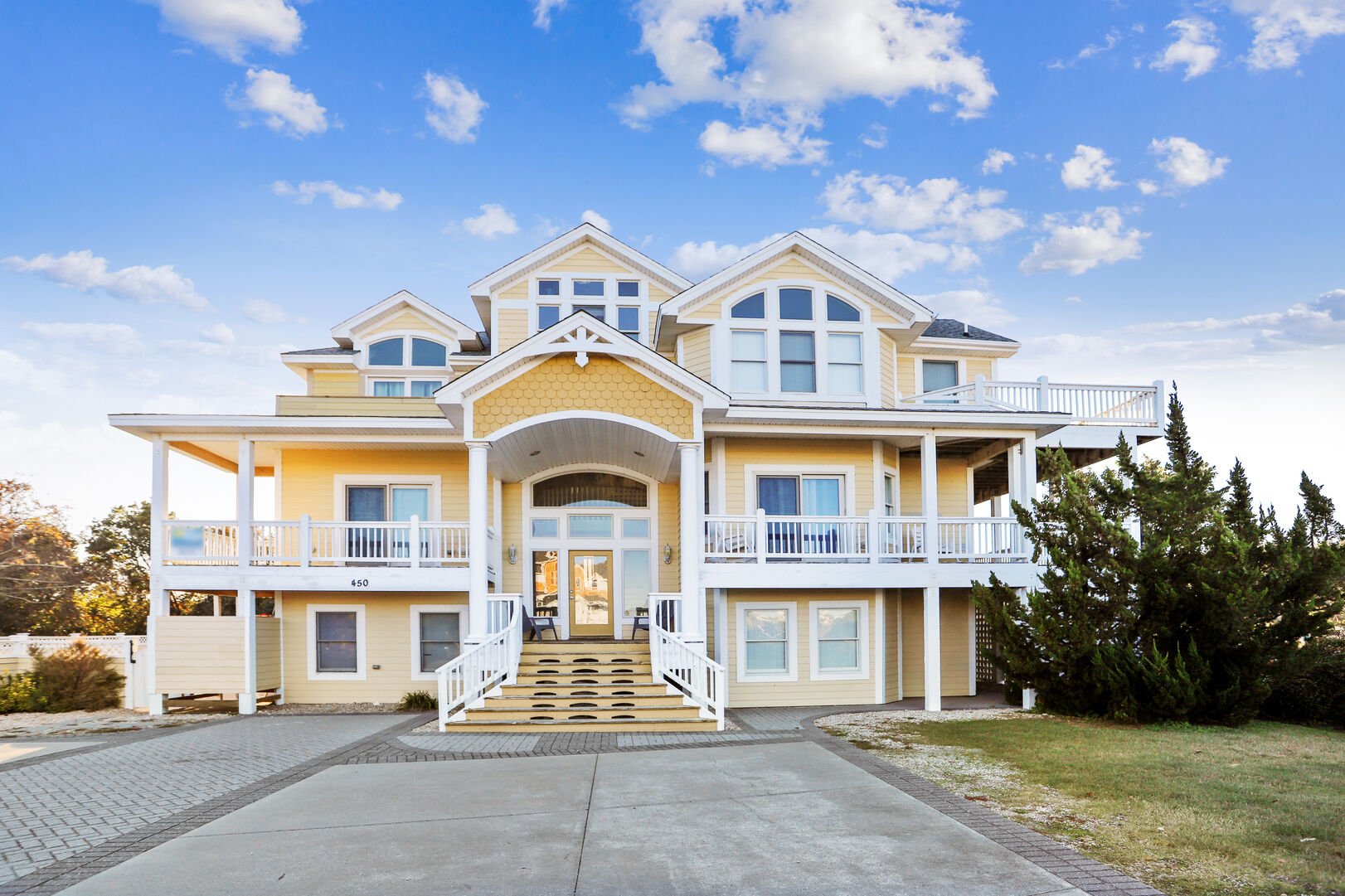The Extravagant Reality of a 23-Bedroom House in the Outer Banks

The Outer Banks, a string of barrier islands off the coast of North Carolina, is renowned for its stunning beaches, captivating natural beauty, and a rich history intertwined with tales of pirates, shipwrecks, and resilient communities. While the region is known for its charming beach towns and vacation homes, the existence of a 23-bedroom house raises eyebrows and sparks curiosity. This colossal structure, towering over the landscape, represents an extraordinary feat of architecture and a testament to the opulent lifestyles of some individuals.
The presence of such a grand estate in the Outer Banks reflects a trend of wealthy individuals and families seeking secluded havens and luxurious retreats in coastal destinations. The region’s pristine beaches, breathtaking sunsets, and tranquil ambiance attract those seeking to escape the hustle and bustle of urban life. The Outer Banks has long been a haven for the wealthy, with historical ties to prominent families and their opulent estates.
Historical Context of Grand Estates in the Outer Banks
The history of the Outer Banks is intertwined with the stories of wealthy families who sought refuge and prosperity in this coastal paradise. From the early colonial era, the region attracted settlers who sought to establish themselves in a land of opportunity. The Outer Banks’ strategic location and natural resources, including abundant fishing grounds and fertile land, provided a foundation for economic growth and the rise of prominent families.
Over the centuries, the Outer Banks witnessed the construction of grand estates, showcasing the wealth and influence of prominent families. These estates often served as symbols of status, demonstrating the power and prestige of their owners. The grand architecture, elaborate interiors, and expansive grounds reflected the opulent lifestyles of these families.
For instance, the “Old House” in Manteo, built in 1722, is a historic landmark that reflects the colonial era’s architecture and the presence of wealthy families in the region. This grand estate, with its impressive facade and spacious interiors, stands as a testament to the prosperity of its original owners.
Another notable example is the “Whalehead in Corolla,” a stunning example of Art Deco architecture built in 1925 by the wealthy industrialist Edward Collings Knight. This estate, with its unique design and luxurious features, represents a period of economic prosperity in the Outer Banks.
Reasons for Building a 23-Bedroom House, 23 bedroom house outer banks
The construction of a 23-bedroom house in the Outer Banks raises questions about the motivations behind such a massive undertaking. Several factors could contribute to the decision to build a house of this scale.
* Family Gatherings: The house could be designed to accommodate large family gatherings, allowing extended families to reunite and create lasting memories in a breathtaking setting.
* Tourism and Rental Income: The house could be used as a luxury rental property, catering to affluent travelers seeking a unique and unforgettable vacation experience. The vast space and amenities would appeal to groups of friends, extended families, or corporate retreats.
* Investment Opportunity: The house could be an investment opportunity, capitalizing on the increasing demand for luxury real estate in the Outer Banks. The high rental income potential and the appreciation of property values in the region make it an attractive investment for wealthy individuals.
Exploring the Interior and Exterior Design of a 23-Bedroom House: 23 Bedroom House Outer Banks

A 23-bedroom house in the Outer Banks presents a unique opportunity to create a luxurious and functional space for large groups. The design should cater to the needs of diverse guests while maintaining a cohesive and elegant aesthetic. This necessitates careful planning and consideration of various factors, from optimal room layouts to unique architectural features and outdoor amenities.
Floor Plan Considerations
An efficient floor plan is essential for a 23-bedroom house. It should maximize space utilization while ensuring comfortable flow and privacy. The layout should consider the following:
- Grouping Bedrooms: Divide the bedrooms into clusters for easier management. For example, group bedrooms for families, couples, or individuals. This can be achieved by creating separate wings or levels within the house.
- Central Common Areas: Designate spacious common areas such as a grand living room, dining room, and kitchen, that serve as central gathering spaces for all guests.
- Dedicated Spaces: Consider dedicated spaces for activities like game rooms, media rooms, or fitness areas to cater to different interests and provide entertainment options.
- Accessibility: Ensure easy accessibility for all guests, including those with mobility limitations. This may involve wide hallways, ramps, and accessible bathrooms.
Unique Architectural Features
A 23-bedroom house offers the opportunity to incorporate unique architectural features that enhance its grandeur and functionality. Some ideas include:
- Multiple Kitchens: Having multiple kitchens, perhaps a main kitchen and a smaller catering kitchen, can facilitate large gatherings and allow for more flexibility in preparing meals.
- Private Balconies: Provide private balconies or patios attached to each bedroom for guests to enjoy the beautiful Outer Banks views and fresh air.
- Grand Staircases: A grand staircase with intricate details can add a touch of elegance and serve as a focal point within the house.
- Elevator: An elevator can make navigating the house easier, especially for multi-story structures.
Landscaping and Outdoor Amenities
The exterior of a 23-bedroom house should complement its grand scale and provide ample space for relaxation and entertainment. Some outdoor amenities to consider include:
- Swimming Pool: A large swimming pool with a spacious deck area is a perfect addition for guests to enjoy the Outer Banks sunshine.
- Outdoor Kitchen and Dining Area: An outdoor kitchen with a grill, bar, and dining area can be an ideal space for social gatherings and al fresco dining.
- Landscaped Gardens: Lush gardens with walkways, seating areas, and water features can enhance the aesthetic appeal and create tranquil spaces for relaxation.
- Waterfront Access: If located on the waterfront, consider incorporating features like a private dock, boat slips, and direct beach access to enhance the experience.
